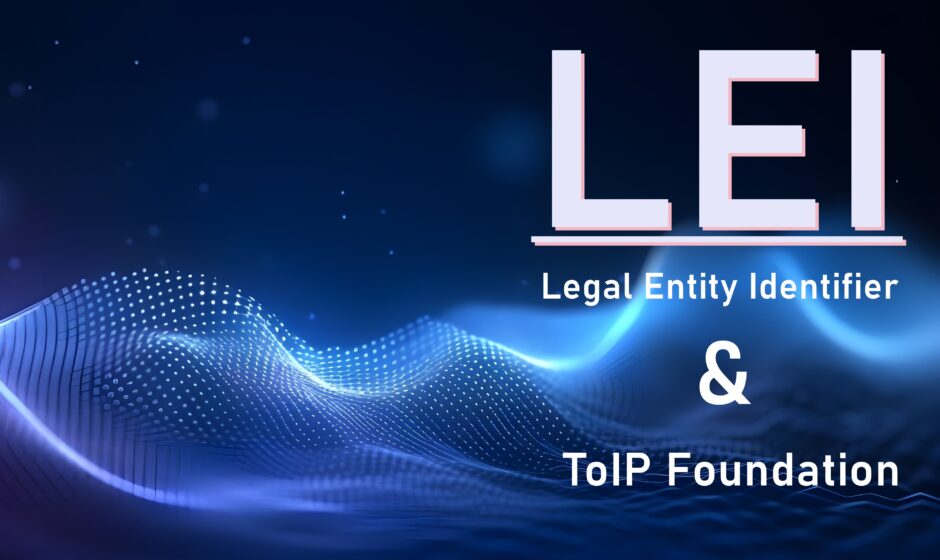In today’s digital world, trust plays a pivotal role in securing online transactions, communications, and business operations. As the digital economy grows, the need for a standardized approach to managing digital trust becomes increasingly critical. This article delves into the efforts of the Trust Over IP (ToIP) Foundation in building a global standard for digital trust and the significance of the Legal Entity Identifier (LEI) in this mission.
The Importance of Digital Trust in a Connected World
Digital trust is the foundation upon which secure online interactions are built. It is the assurance that individuals, organizations, and devices in the digital space are who they claim to be and can be relied upon to behave consistently and securely. As digital transactions and interactions continue to grow, the risk of identity fraud, data breaches, and cybercrimes also increases. Hence, establishing a robust digital trust framework is not just a luxury but a necessity.
A standardized framework for digital trust enables smooth and secure online interactions. It ensures that entities, whether individuals or organizations, are verified and authenticated across various platforms. However, creating a global standard for digital trust is complex due to the diverse nature of digital transactions and the myriad of regulations governing online activities worldwide.
Trust Over IP Foundation: The Road to a Global Standard
The Trust Over IP Foundation (ToIP) is at the forefront of establishing a global standard for digital trust. Launched in May 2020 as a project under the Linux Foundation, ToIP brings together organizations, governments, and individuals to collaborate on building a universally recognized framework for managing digital trust. The foundation focuses on developing a set of specifications, protocols, and tools that enable secure and verifiable digital interactions.
ToIP operates based on a multi-layered model. This model covers the technical and governance aspects of establishing digital trust:
- Technology Layer: It provides the technological infrastructure necessary for creating and managing decentralized digital identities. This layer includes protocols, tools, and standards that facilitate the creation of verifiable digital credentials.
- Governance Layer: This ensures that the digital trust framework complies with legal, regulatory, and ethical standards. It establishes rules, policies, and practices for managing digital identities, thereby ensuring a uniform application of trust principles across different sectors and jurisdictions.
The Role of Legal Entity Identifier (LEI) in Digital Trust
A crucial component of the global digital trust framework is the Legal Entity Identifier (LEI). The LEI is a 20-character, alphanumeric code that uniquely identifies legally distinct entities participating in financial transactions. Developed in response to the 2008 global financial crisis, the LEI system aims to enhance transparency and reduce risk in the global financial system.
The integration of LEIs into the digital trust framework offers several advantages:
- Identity Verification: The LEI provides a reliable way to verify the identity of legal entities in the digital space. By linking the LEI with digital credentials, organizations can ensure that they are transacting with legitimate and recognized entities.
- Cross-Border Trust: In a global economy where businesses operate across borders, the LEI serves as a universal standard for identifying entities. This cross-border recognition simplifies international transactions and minimizes the risk of identity-related fraud.
- Regulatory Compliance: With the increasing demand for compliance with regulations like the General Data Protection Regulation (GDPR) and the Anti-Money Laundering (AML) directives, LEIs help organizations meet regulatory requirements. They provide a standardized method for identifying entities, facilitating easier monitoring and auditing of digital transactions.
LEI and the Trust Over IP (ToIP) Framework
The LEI plays a significant role in the ToIP framework by providing a universal identity standard for legal entities. Within the ToIP model, the LEI helps build trust between parties by verifying the authenticity of entities involved in digital interactions. By integrating LEIs into the digital credentials issued through the ToIP framework, organizations can enhance their digital trust mechanisms, ensuring secure and reliable online transactions.
ToIP’s vision aligns with the Global Legal Entity Identifier Foundation (GLEIF) in promoting a globally recognized identity system. The inclusion of LEIs in the ToIP framework demonstrates the commitment to creating a robust, verifiable, and interoperable digital identity system. It reinforces the importance of using a common, global identifier for legal entities in establishing digital trust.
Collaboration for a Secure Digital Future
The success of a global standard in digital trust depends on collaboration between organizations, governments, and technology providers. The ToIP Foundation, with its open-source approach, facilitates cooperation across sectors to develop a digital trust framework that meets the needs of a diverse range of stakeholders.
By working closely with entities like GLEIF, the ToIP Foundation aims to create a future where digital interactions are secure, verifiable, and universally recognized. GLEIF’s support for integrating LEIs into the ToIP framework underscores the significance of having a standardized system for identifying legal entities in the digital world.
The Future of Digital Trust
The journey towards a global standard for digital trust is ongoing. As the digital economy evolves, so too will the challenges related to digital identity, verification, and security. The efforts of the ToIP Foundation, in partnership with GLEIF and other stakeholders, are paving the way for a digital ecosystem where trust is not just an expectation but a guarantee.
The integration of the LEI into the ToIP framework signifies a step forward in building a comprehensive system for managing digital trust. By providing a reliable method for verifying legal entities, the LEI contributes to a more secure digital environment, facilitating seamless interactions and transactions.
Conclusion
Digital trust is the cornerstone of today’s interconnected economy. As online interactions become increasingly complex and global in scope, the need for a standardized approach to managing digital trust becomes ever more pressing. The Trust Over IP Foundation is leading the charge in developing a global standard for digital trust, with the Legal Entity Identifier playing a vital role in this mission.
By integrating the LEI into its multi-layered model, ToIP offers a framework that not only ensures the verification of digital identities but also promotes regulatory compliance and cross-border trust. Through collaboration with organizations like GLEIF, the foundation is building a secure digital future where trust is universally recognized and verifiable.
The road ahead involves continuous cooperation, technological advancements, and the adoption of global standards. However, with initiatives like ToIP and the use of LEIs, we are on the right path towards a world where digital trust is solid, secure, and seamless.


